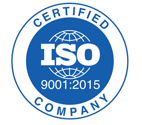The In Vitro Medical Devices Regulation (EU) 2017/746 (IVDR) was released back in 2017 and represents one of the most impactful regulations ever within the medical device industry. The standard laid out new requirements to enhance safety, integrity, and quality of medical devices performing an in vitro diagnostic function, inclusive of clinical evidence/documentation, post-market surveillance, vigilance, unique device identification (UDI), CAPA management, and risk management. Earlier this month, the Medical Device Coordination Group, or MDCG, published guidance to clarify what products fall under the scope of IVDR. This is also referred to as ‘qualification’ as an in vitro diagnostic medical device (IVD) or an accessory to an IVD. Qualification of specific products should be considered on a case-by-case basis by each manufacturer based on their intended purpose. Effectively differentiating between IVDR and Regulation (EU) 2017/745 on medical devices (MDR) is critical as the MDR clearly states that it does not apply to IVDs.
Let’s start off by revisiting a key definition. Article 2(2) of the IVDR defines an IVD as: “any medical device which is a reagent, reagent product, calibrator, control material, kit, instrument, apparatus, piece of equipment, software or system, whether used alone or in combination, intended by the manufacturer to be used in vitro for the examination of specimens, including blood and tissue donations, derived from the human body, solely or principally for the purpose of providing information on one or more of the following: (a) concerning a physiological or pathological process or state; (b) concerning congenital physical or mental impairments; (c) concerning the predisposition to a medical condition or a disease; (d) to determine the safety and compatibility with potential recipients; (e) to predict treatment response or reactions; (f) to define or monitoring therapeutic measures.”
Additionally, the MDCG guidance document reasserts the essential characteristics of an IVD as follows:
- An IVD can be a reagent, reagent product, calibrator, control material, kit, instrument, apparatus, piece of equipment, software or system. Animals used for diagnostic purposes, e.g. dogs used for detection of cancer are not IVDs.
- The IVD may be intended to be used either alone or in combination with other devices or products.
- The IVD is used in vitro for the examination of a specimen derived from the human body. The specimen is never reintroduced into the body. Note: if no specimen is involved, or if the examination takes place in or on the human body (in vivo), the devices intended to be used for this examination are not IVDs.
- The IVD is used in vitro for the examination of a specimen derived from the human body. Devices for detection of pathological agents in the environment or in animals (e.g. detection of Borrelia in the tick that has bitten a patient to aid the diagnosis of Lyme disease) or devices used in veterinary diagnostics (e.g. for the detection of SARS-CoV2 or cancer in canines or bovine spongiform encephalopathy in cows) are not IVDs.
- The principal intended purpose of an IVD is to solely or principally provide information for one or more specific medical purposes. Note that the MDCG provides examples of each medical purpose.
To assist manufacturers in the qualification process of determining whether a product falls under IVDR, the MDCG guidance document addresses several specific product types including:
- Accessories (i.e. a cleaning solution specifically intended to be used with a defined automated IVD instrument)
- Specimen receptacles and products used for specimen collection (i.e. needles, swabs, collection tubes)
- Devices where no specimen is involved (i.e. pulse oximeter, MRI scanner)
- Products for general laboratory use (i.e. centrifuges, pipettes, flasks)
- Products for research use only
- Combinations of products placed on the market together (i.e. IVD kits)
- Calibrators and control materials
- Software
- Microbiological culture media
- Stains
- Tests intended to be used in manufacturing process control
- Testes intended to be used in the context of biological or chemical warfare
- Tests to be used in law enforcement (i.e. paternity tests, drug/alcohol detection tests)
- Relation with Regulation (EU) No. 528/2012 on biocidal products
Each of these product types is described in detail with a recommendation as to whether or not it should be qualified as an IVD.
Any manufacturers involved with IVDs, or products potentially to be qualified as IVDs, should review the MDCG guidance document carefully in order to ascertain the applicability of IVDR versus MDR.
Should you require any assistance with IVD qualification or with any Quality Assurance or Regulatory Compliance matters relating to your medical devices or pharmaceuticals, please contact us at PRP. We understand how challenging it can be to maintain compliance while managing your day-to-day operations. We have a large, experienced team of Med Device/Pharma QA/RA consultants throughout the country who can seamlessly integrate with your team to fill any gaps in expertise or bandwidth, ensuring you stay on track with your compliance goals. We would welcome the opportunity to work together!


